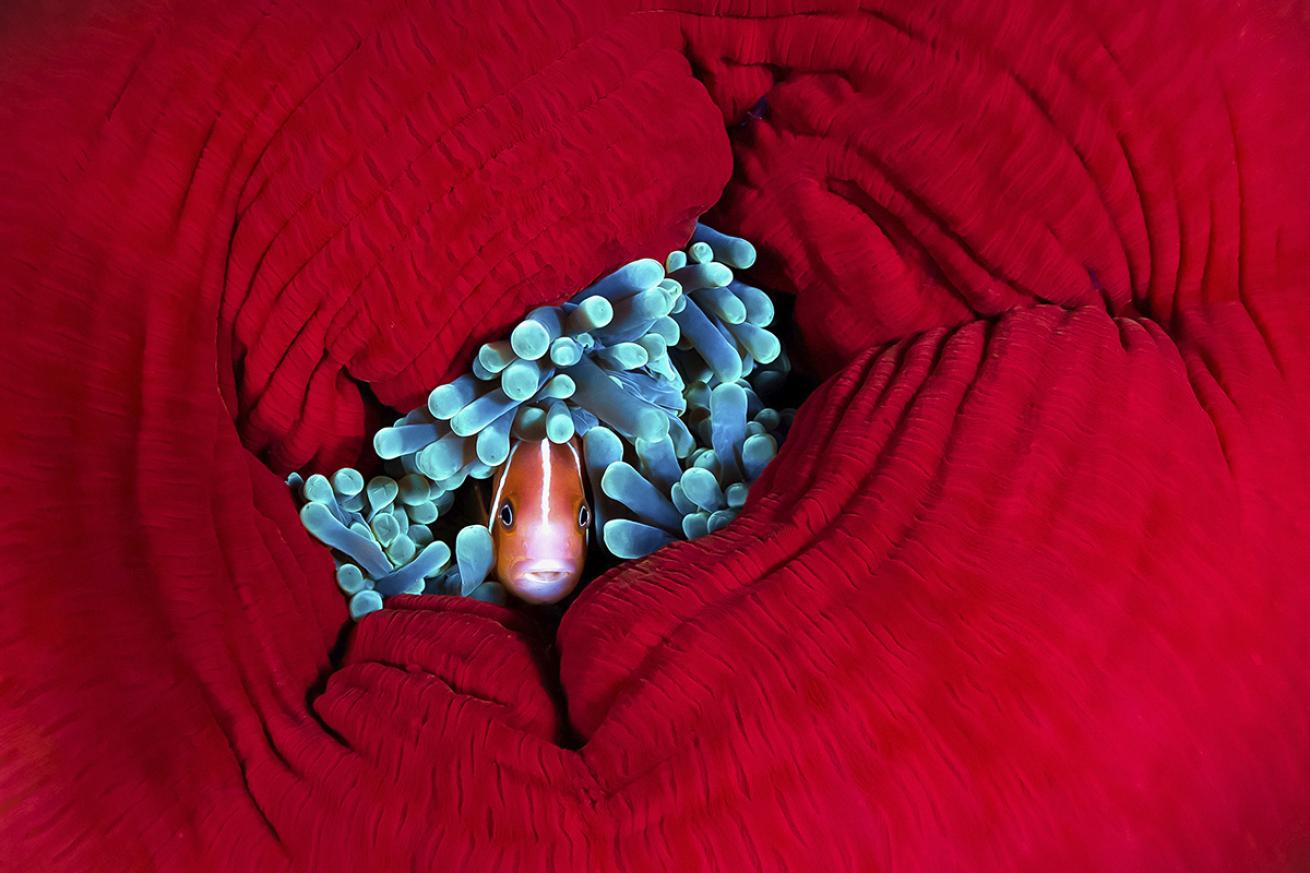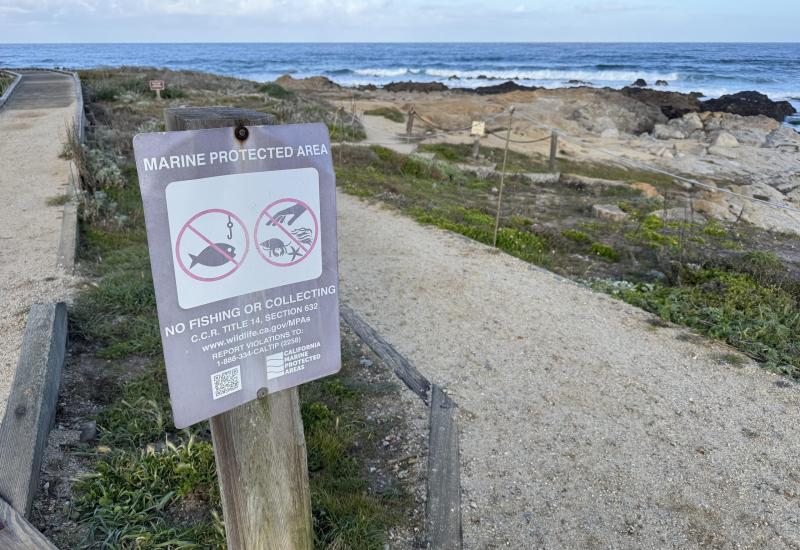Pro Tips for Finding Marine Life While Scuba Diving

Michael GallagherTo find the coolest creatures, you need to know where, when and how to look.
Diving is a treasure hunt. Bucket-list big animals, secret macro gems, mind-blowing behaviors—no matter what type of plan you’re diving, chances are you’re in search of something.
Ned DeLoach knows this better than anyone. Since learning to dive in the early 1970s, the cofounder of Reef Environmental Education Foundation has scoured the globe in search of species large and small as research for some of diving’s most influential field guides, including Reef Fish Identification and Reef Creature Identification, co-authored by Paul Humann. When you see a puzzled dive guide trying to identify a critter they’ve never seen before, they’re typically nose deep in one of DeLoach’s books (Related: Read more about diving with Ned and Anna DeLoach).
“Discoveries take many forms, from finding a creature you’ve never seen before to the thrill of finally tracking down a dream fish you been hunting for years or even discovering an undescribed species or an animal you’ve never imagined existed,” he says. “And then there’s the added bonus of simply rediscovering a favorite animal. To this day, even though I’ve seen hundreds, I can’t pass a sailfin blenny without taking a look.”
After 50 years of diving, for DeLoach, “That first indelible glimpse of raw, unfettered exploration that became my polestar remains with me today. I still can’t get enough of it.” And neither can you. So, here’s some advice from the master.
Do your homework
Knowledge is power—developing an awareness of a site’s most compelling creatures adds drama and enjoyment. Understanding your prey is fundamental to every hunt, whether you’re a photographer visiting an exotic destination or just an average diver at a favorite local site.
“A little knowledge goes a long way,” DeLoach says. “Reading everything you can get your hands on and taking a fish ID course are good places to start, but resources are limited, and few instructors or resorts provide natural-history instruction. Local knowledge is always a big asset.”
Building your own foundation of knowledge is a process. Start off by studying physical characteristics, such as size, color, patterns and other qualities. Pile on details about the animal’s preferred habitat, including common environments where they feed and hide from predators. And top it all off by learning aspects of the creature’s behavior, which can be one of the most useful types of information—and the most rewarding.
“Watching an animal’s behavior makes a connection that is far more profound than simply knowing a name,” DeLoach says. “Connections make memories, and the sea is filled with connections if you will yourself to slow down and open your mind to all the possibilities.”
Learn how to see
Simply cruising along the reef with your head on a swivel isn’t good enough to find the really cool creatures. Because many of the richest treasures might be hiding in plain sight—but impossible to spot unless you know how to look.
“Perceiving random movement, such as the flick of a fin or antenna, is the most successful way to break a creature’s camouflage code,” DeLoach says. “And as any hunter can tell you, roving eyes don’t tend to see movement well—diving slow is the trick.”
Training your mind and body to slow down can be a challenge, but with mindfulness and practice, your success rate will increase slowly but surely. Some of the most prolific critter finders will spend an entire dive on a single coral head, waiting patiently for an animal to come into focus, or a behavior to happen.
“One of my many favorites, the hairy octopus, is a thumb-size cephalopod from the Pacific that, when settled on the bottom, looks like a reddish-brown tuft of string algae,” DeLoach says. “My Indonesian dive guide caught sight of the last bit of movement as the illusionist seemingly disappeared on the side of an algae-pocked rock, which brought to mind the question of how many hairy octopuses had I swam past during my decade-long search before striking gold? The good news: Once you find an animal that relies on camouflage they seldom bolt, providing plenty of time to enjoy your success.”
Read Next: 8 Fascinating Facts About Moray Eels
And much like muscle memory, visual identification of camouflaged creatures can improve over time. According to DeLoach, “Once you locate a cryptic animal, it will be easier to detect in the future because of a phenomenon known as a ‘search image,’ where key characteristics are imprinted subconsciously from previous encounters.”
Develop a deeper appreciation
By building a broad knowledge of morphology, habitat and behavior, divers can experience a profound change in awareness and enjoyment. Just as our comfort and confidence in diving progresses with experience, so does our appreciation of the life around us as we grow our understanding of marine species.
“If you learn more about marine life, I guarantee diving will never become passé,” DeLoach says. On any given dive in the Caribbean, he says, you can encounter approximately 500 different fish, and five times that in the Indo-Pacific. “This vast menagerie doesn’t even account for the endless parade of invertebrates that challenge our sense of reality.”
With this startling variety of biodiversity awaiting us on nearly every site, divers are privy to a lifetime of adventure that we’re just beginning to appreciate.
“Count yourself lucky, because you live among the first generation of mankind that, thanks to the advent of scuba, can freely swim with the fishes,” DeLoach says. “When exploring underwater, we’re all pioneers. Even after half a century studying fishes, the sea continues to give up new wonders, one treasure at a time.”
The Hack: Surrender to Your Quarry
Often, the key to successfully locating a hard-to-find species is the willingness to invest precious time in the process. Because we’re always watching the clock, or keeping up with the group, bottom time can often betray our quest. To find the true masters of camouflage, be prepared to spend an entire dive on the hunt. DeLoach’s advice: “Slow down, dare to think small, and be willing to turn your dive over to an animal or behavior that strikes your fancy.” The reward will be worth your time.










